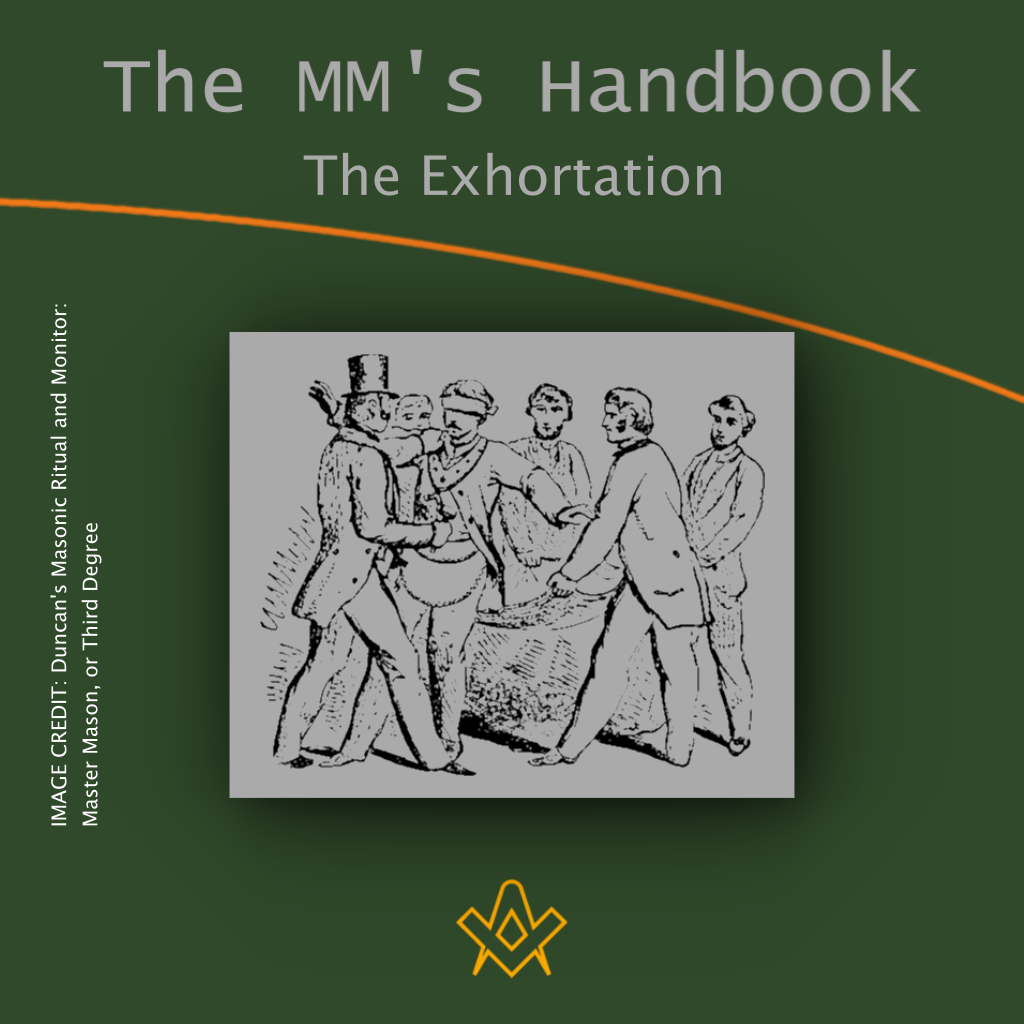The opening part of the exhortation gives a convenient summary of the previous degrees and quite clearly indicates that the first inner meaning of the series is Birth, Life which is of course educational and preparatory for its sequel, and Death.
Chapter IV – The Exhortation
The phrase relating to the second degree “And to trace it, from its development through the paths of Heavenly Science even to the throne of God Himself,” shows plainly its real significance.
As pointed out in the “Fellowcraft’s Handbook”, in the Middle Chamber the Fellowcraft discovers not only the name of God, but that he himself is the fifth letter Shin which transforms the name Jehovah into the name Jeheshue, or Messias, the King.
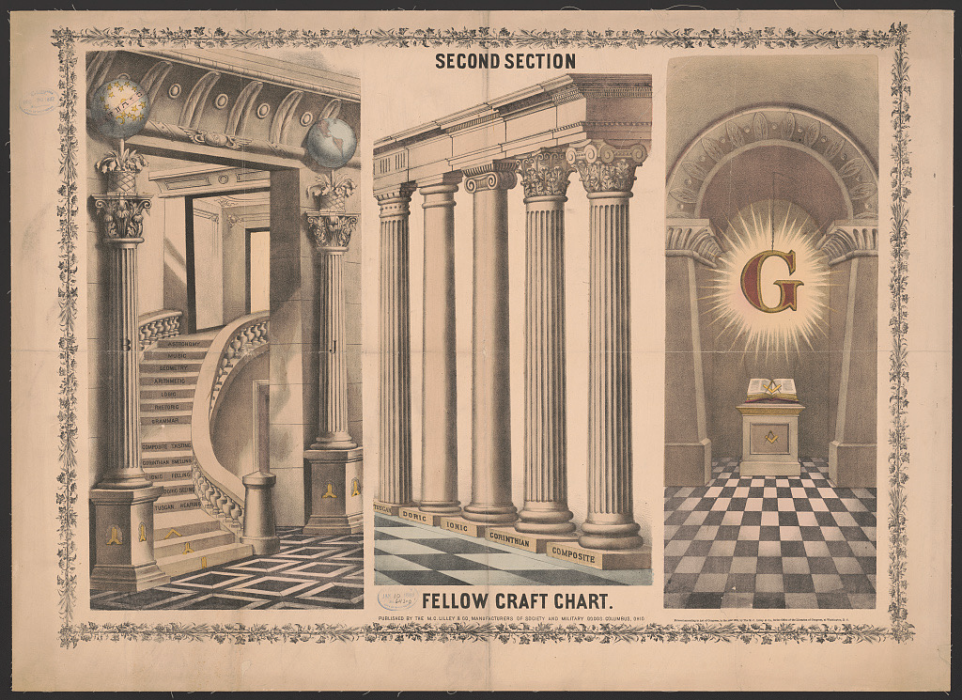
Masonic image
IMAGE LINKED: wikimedia Attribution 4.0 International (CC BY 4.0)
But according to the old Kabala Jeheshue must be raised on the cross of Tipareth, and the significance of this fact is impressed on our candidate by the incidents now to take place.
The average Christian need not trouble about the subtleties of the Kabala, for the story in the New Testament supplies him with a very similar interpretation.
The W.M. having, almost casually, given him this key to the inner meaning of what is about to follow, proceeds at once to the most dramatic part of the ceremony. Up to this point almost all forms of our ritual are practically the same, but henceforward there are many marked differences.
“Emulation” ritual may be regarded as containing the bare minimum, but the additional details found in many Provincial workings in England, and in Scotland, Ireland, America, and many of the Continental Lodges, are too important to be ignored.
There is no reason to assume that they are innovations; on the contrary all the evidence points to the fact that they are integral parts of the ceremony which, for various reasons, were omitted by the revisers of our ritual who met in the Lodge of Reconciliation. I shall therefore proceed to note and explain them where necessary.
Whereas in Emulation working as soon as the Wardens are called on the Deacons retire, in most others, in the Provinces, etc., they fall back to the head of the grave. Thus with the W.M. the Wardens form the triangle of Spirit, and with the Deacons the square of matter, on which the triangle rests, for the Master descends from his chair and stands in front of the Pedestal.
As a practical piece of advice I would recommend that the J.W. should not direct the candidate to cross his feet until after the S.W. has dealt with him, for it is impossible for him to drop on his respective knees if his feet are crossed, whereas by carrying out these instructions before the last attack he will fall the more readily.
In most of the old Scotch rituals the candidate journeys round the Lodge, is attacked by the J.W. in the south, by the S.W. in the west. (note that), and returns to the W.M. in the east, where the final incident takes place. I think, however, our English system of having the attack in the north instead of in the west is preferable, and is probably the correct form. In the Scotch ritual the three villains have names, and the same is the case in America.
They are Jubela, Jubelo, and Jubelum. The word itself clearly comes from the Latin word meaning “To command,” and refers to the fact that they commanded him to give up the secrects. But the terminations of the three names appear to have a curious esoteric reference to India. It can hardly be by accident that these three names form the mystic word AUM.
The U in India in this case is pronounced almost like O, and when this word is disguised, as it usually is, it is written OMN. If this be so we have the Creative Preservative, and Annihilate aspects of the Deity emphasised in the Third Degree, and it is the Destructive aspect, symbolised by the letter M, which deals the final stroke.
This variation is therefore of importance, but I must warn my readers that not all Scotch workings have it, some of them being much more akin to our own, even having the attack in the north.
Practically all of them, however, have the perambulations, during which solemn music is played. The usual procedure is for the brethren to pass round the grave once making the penal sign of an Entered Apprentice Freemason.
When this is done the J.W. makes his abortive attempt. The second round is made with the hailing sign. of an Fellowcraft Freemason after which the S.W. tries and fails.
The third round is made with the sign of grief and destress of a Master Mason on the conclusion of which the candidate is raised by the lion’s grip.
It is a great pity that the use of this name for the Master Mason’s grip is falling into disuse in London, for it has in itself important symbolical references, to which we shall refer later in the chapter.
In many parts of England, it is still customary to place the candidate either in a coffin or in an open grave made in the floor, and the same method is found in most other parts of the world. Indeed, in the Dutch ritual the candidate is first of all shown a coffin in which is a human skeleton.
This is subsequently removed, though he does not know it and he thinks when he is laid therein he will find himself in its bony clutches. Even as near London as Windsor there is a Masonic Temple which has a special chamber of death with an open grave actually in the floor and until recently it was still used although whether it is today, I cannot say.
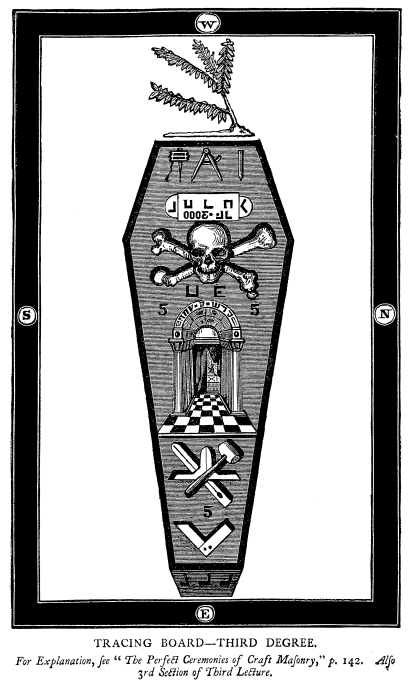
Let us now turn to consider the meanings of the main incidents. The first meaning of the degree is obvious; it prepares a man for his final end and hints of a possibility of life beyond the grave, but it must be admitted that the lesson is not driven home with the same force as it is in most of the ancient mysteries.
Osiris Himself rose from the dead and became the Judge of all who followed after Him, and because of this fact His worshippers believed that they too would rise.
In our legend, however, it is only the dead body of Hiram A’biff which is lifted out of the grave in a peculiar manner, and in the legend there is not even a hint as to what befell his Soul.
The question is often asked why they should have raised a closed sarcophagus and placed it on its feet. [1]
One explanation probably is, by analogy with the Greek story of the manner in which Hercules recovered Alcestis and ransomed her from the bondage of Thanatos – Death himself.
We are told that Hercules wrestled with Thanatos and would not let him go until he had agreed to allow Hercules to bring her back from the realm of the Shades to the land of living men.
It may be that the corpse here represents Death. It is also worth noting that Isis joined together the fragments of the body of Osiris, and the “Setting up” of the backbone of the God was a ceremony carried out every year by the ancient Egyptian Priests.
The body of Osiris apparently was raised from the bier by Anubis in precisely the same way as the Master Mason is rraised. When it was set on its feet life returned to it.
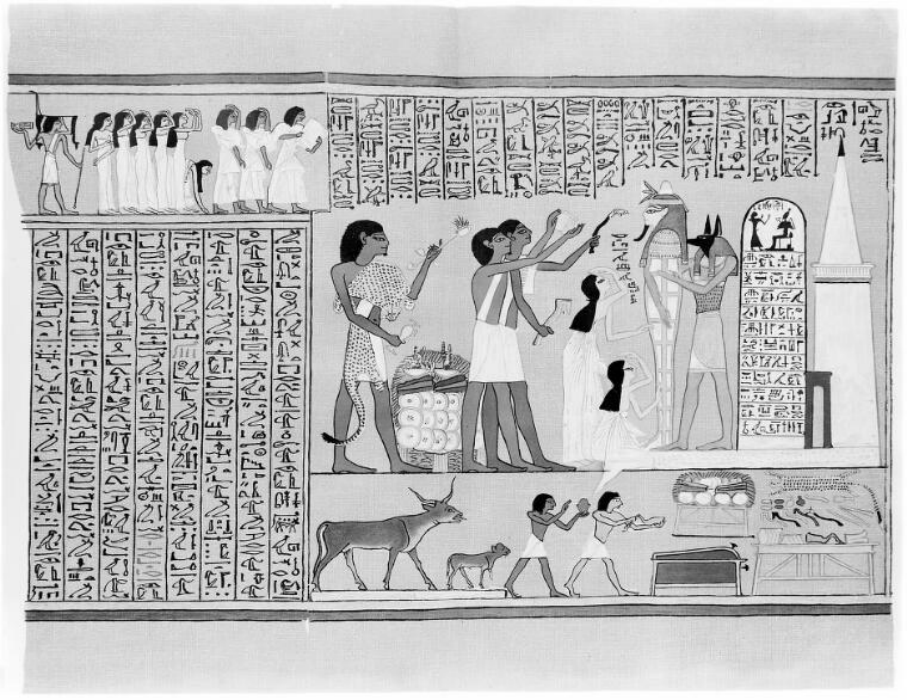
Raising the body of the deceased for the Opening of the Mouth Ceremony – from the Book of Coming Forth by Day (Book of the Dead)
IMAGE CREDIT: Wellcome Collection Attribution 4.0 International (CC BY 4.0)
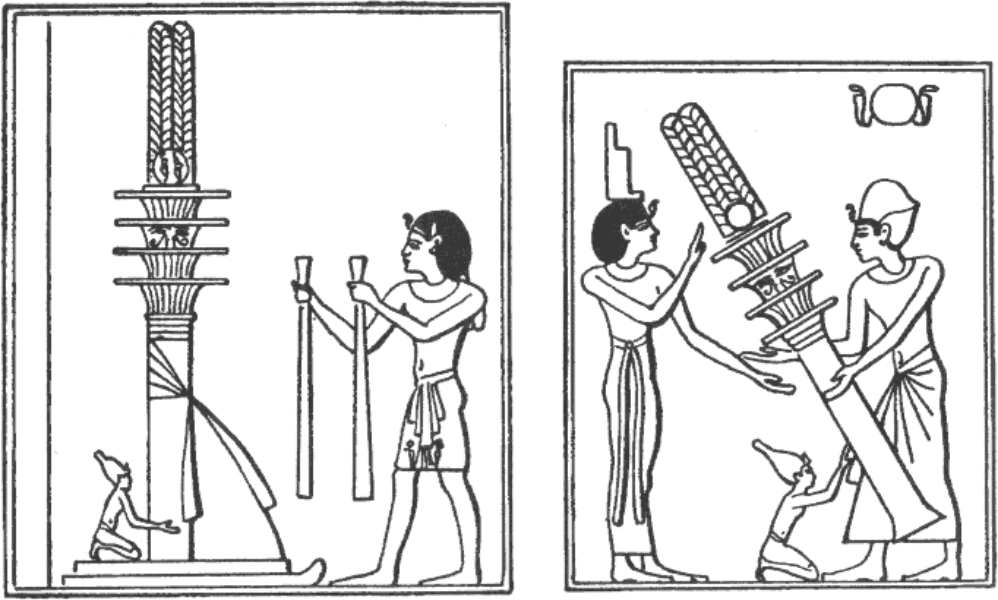
The ancient Egyptian ritual of raising the Djed Pillar – symbolising the resurrection of the god Osiris.
IMAGE LINKED: wikimedia Attribution 4.0 International (CC BY 4.0)
One fact is certain, that in every Rite which has as its central theme symbolic death the candidate is raised by the same grip, and in precisely the same manner, and this manner becomes a method of greeting and of recognition among all who have passed through this type of ceremony.
For example: -it is known and used in the Dervish Rite, among West Africans, among the Red Indians of Central America, and was apparently known to the ancient Druids, for it is carved on a stone found at Iona.
In the ancient rites of Mithra, it also appears to have been the method used upon a similar occasion. These facts show that it is an ancient landmark and one to be most carefully guarded.
The use of the phrase ‘The Lion Grip’ is peculiarly significant, as Major Sanderson shows in his work, “An Examination of the Masonic Ritual”.
Therein he points out that in the Book of the Dead the Supreme God, whether Ra or Osiris, is appealed to as the “God in the Lion form,” and in all such cases the prayer of the Soul is that he may be permitted to “Come forth” in the East, rising with the sun from the d..s of the g.
In Egypt the lion was the personification of strength and power, but it is usually associated with the idea of the regeneration of the Sun, and therefore with the resurrection.
Major Anderson goes on to point out as follows. Shu (Anheru, “the Lifter’) who as the light of the Dawn was said to lift up the sky-goddess from the arms of the sleeping Earth, is often represented as a lion, for only through him was the rebirth of the Sun made possible.
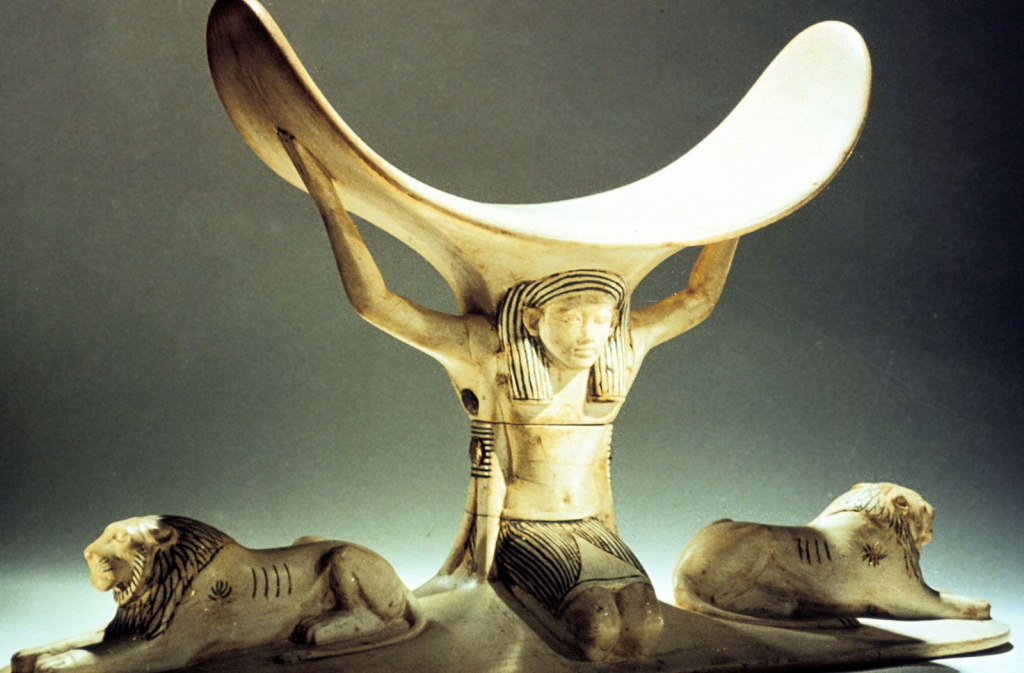
Shu ‘lifting the sky’ – Headrest; Tutankhamun tomb, Cairo Museum.
Via Encyclopædia Britannica https://www.britannica.com/topic/Shu-Egyptian-god#/media/1/542149/238289
Osiris is called the lion of yesterday, and Ra the Lion of tomorrow: the bier of Osiris is always represented as having the head and legs of a lion.” Thus, as Major Sanderson indicates, the expression “the lion grip” is a survival from, the Solar cult, and therefore a landmark which should be carefully preserved.
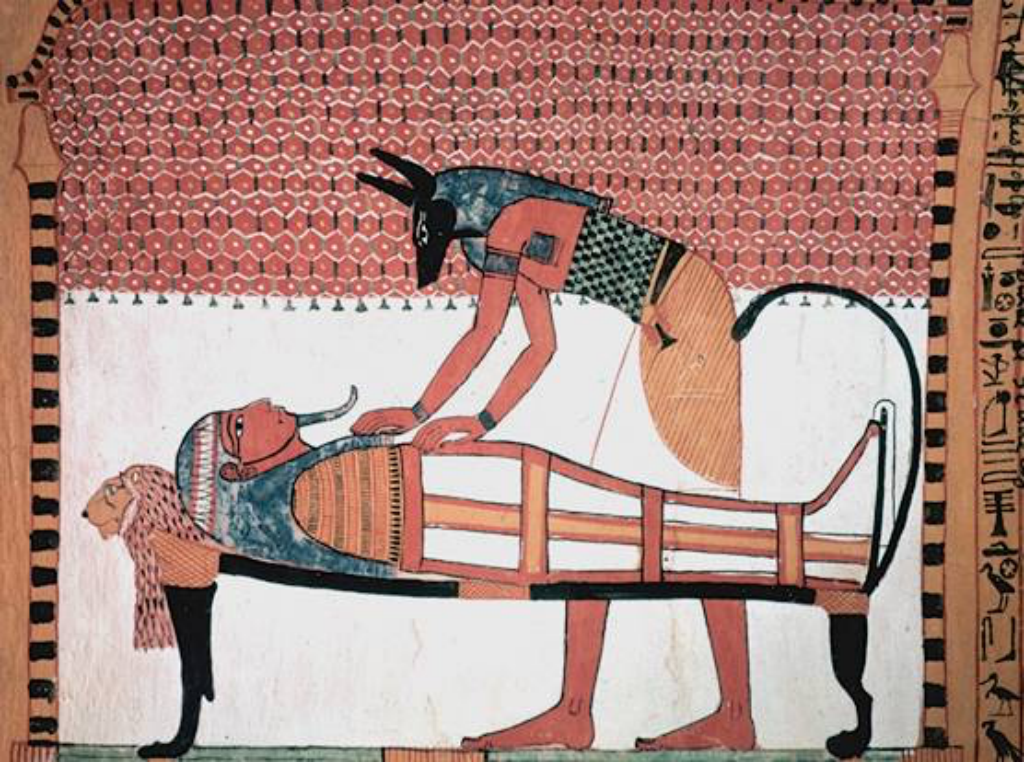
Anubis tending to the body of the deceased on an Osiris bier (as per the Osirian myth)
IMAGE LINKED: wikimedia Attribution 4.0 International (CC BY 4.0)
The Bright Morning Star whose rising brings peace and Salvation, almost certainly was originally Sirius, but to Englishmen it must seem strange that Sirius should be said to bring peace and Salvation.
The association of these ideas with the Dog Star is undoubtedly a fragment which has come down from Ancient Egypt, for the rising of Sirius marked the beginning of the inundation of the Nile, which literally brought salvation to the people of Egypt by irrigating the land and enabling it to produce food.
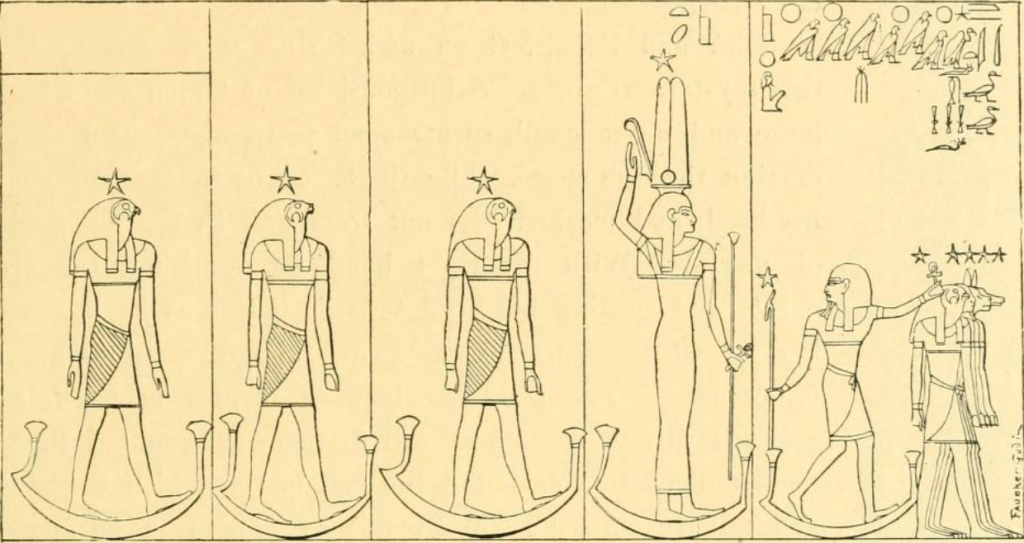
Sah and his consort, Sopdet – better known by her Greek name, Sothis. Sah personified the constellation of Orion, and Sopdet, the bright morning star Sirius (the “dog star”). From: “The Dawn of Civilisation”, G. Maspero, 1918.
IMAGE LINKED: wikimedia Attribution 4.0 International (CC BY 4.0)
That Sirius was an object of veneration to the philosophers of the ancient world is well known to all archaeologists, and many of the Temples in Egypt have been proved to have been oriented on Sirius.
There is also a good deal of evidence showing that some of the stone circles in Great Britain were similarly oriented on Sirius by the Druids.
It is therefore not surprising that this star is still remembered in our rituals. Naturally it has acquired a deeper spiritual meaning in the course of years and may be regarded as representing the First Fruits of the Resurrection, the sure hope of our Redemption.
This aspect is set forth in the lectures drawn up by Dunckerley, who regarded it as the star of Bethlehem, and as typifying Christ. See Rev. xxii, 16.
At this point the candidate, who has been carefully put in the north, the place of darkness, is moved round by the right to the South. From the practical point of view this is to enable the W.M. to re-enter his chair from the proper side, but there is also an inner meaning.
Immediately after death the Soul is said to find itself on the earth plane amid murk and darkness. Lacking mortal eyes, it cannot perceive the sun, and, on the other hand, is still so immersed in matter that it cannot yet see clearly with its spirit eyes; but this stage rapidly passes away, and the Soul is received into a higher plane of existence, being brought thither by messengers of Light.
The position in the North represents this period of darkness on the earth plane, and that this is not accidental is shown by the fact that in most rituals the lights are not turned up until the phrase “That bright morning star, etc.” has been uttered.
Then the W.M., representing one of these spirit messengers, leads the candidate gently round to the South, thereby symbolising his entry into the place of light. And who is this messenger?
Every installed master who has received the Password leading to the Chair should realise that no matter how unworthy, he represents the risen Christ.
Thus, we see the peculiarly appropriate nature of the act coming after the reference to the bright morning star, which also in another sense represents the risen Christ.
[1] See Ward, “Who Was Hiram Abiff”.
Article by: J. S. M. Ward
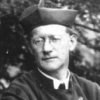
John Sebastian Marlow Ward (22 December 1885 – 1949) was an English author who published widely on the subject of Freemasonry and esotericism.
He was born in what is now Belize. In 1908 he graduated from the University of Cambridge with honours in history, following in the footsteps of his father, Herbert Ward who had also studied in history before entering the priesthood in the Anglican Church, as his father had done before him.
John Ward became a prolific and sometimes controversial writer on a wide variety of topics. He made contributions to the history of Freemasonry and other secret societies.
He was also a psychic medium or spiritualist, a prominent churchman and is still seen by some as a mystic and modern-day prophet.
Recent Articles: Master Mason's Handook J.S.M Ward

Book Review - The EA, FC, MM Handbooks
Essential reading for every Entered Apprentice, Fellowcraft, and Master Mason - these seminal books by J.S.M Ward are what every Mason needs!
more....
 The Master Mason's Handbook P1 Chapter 1 - Questions and Password; a brief explanation of the teaching of the third degree as contained in the symbols by J.S.M Ward |
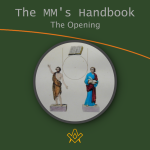 The Master Mason's Handbook P2 Chapter 2 - The Opening; a brief explanation of the teaching of the third degree as contained in the symbols by J.S.M Ward |
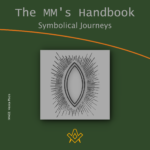 The Master Mason's Handbook P3 Chapter 3 - The Symbolical Journeys; We have seen in the previous books that the square and compasses are united on the pedestal in such a way as to form the Vesica Piscis, the emblem of the female principle, and the symbol of birth and rebirth. Hence symbolically the Candidate passes through the Vesica Piscis. |
 The Master Mason's Handbook P4 Chapter 4 - The Exhortation The opening part of the exhortation gives a convenient summary of the previous degrees and quite clearly indicates that the first inner meaning of the series is Birth, Life which is of course educational and preparatory for its sequel, and Death. |
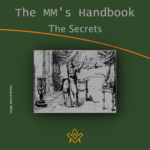 The Master Mason's Handbook P5 Chapter 5 - The Secrets. Having thus been brought into the place of light the Candidate is given not the genuine secrets, but only substituted ones. This fact must often have puzzled the Candidate. The practical reason given in the ritual, though perfectly intelligible to a Royal Arch mason (Companion) , cannot be the real one. |
 The Master Mason's Handbook P6 Chapter 6 - The Badge - On his re-entering the Lodge, the candidate is presented and in due course invested with the badge of a Master Mason by the S.W. The Badge itself, however, is full of symbolic meaning…. |
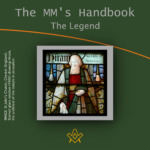 The Master Mason's Handbook P7 Chapter 7 - The Legend - After the ceremonial investiture of the Candidate the W.M. continues the narrative of the traditional history. At least this is the case in most English workings, but in some Scotch workings the whole story is told first, and subsequently the Candidate and the other brethren act the chief parts. Perhaps one of the most important points to realise is the correct meaning of the name Hiram Abiff . |
 The Master Mason's Handbook P8 Chapter 8 - The Tracing Board - The next part of the narrative is incorporated in most English workings with the Tracing Board. The most interesting feature is the description of the grave. It is obvious that peculiar stress is laid on the centre, even in the present form of our ritual, because of the way in which the measurements are given. |
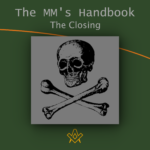 The Master Mason's Handbook P9/10 Chapters 9 & 10 The Closing Finally, even if a man can never fathom the full meaning of the third degree, yet there is no man worthy of the name who has passed through that third degree but will certainly have learnt one important lesson, namely, how to die, and thereby will be the better man. |
masonic knowledge
to be a better citizen of the world
share the square with two brothers

click image to open email app on mobile device



